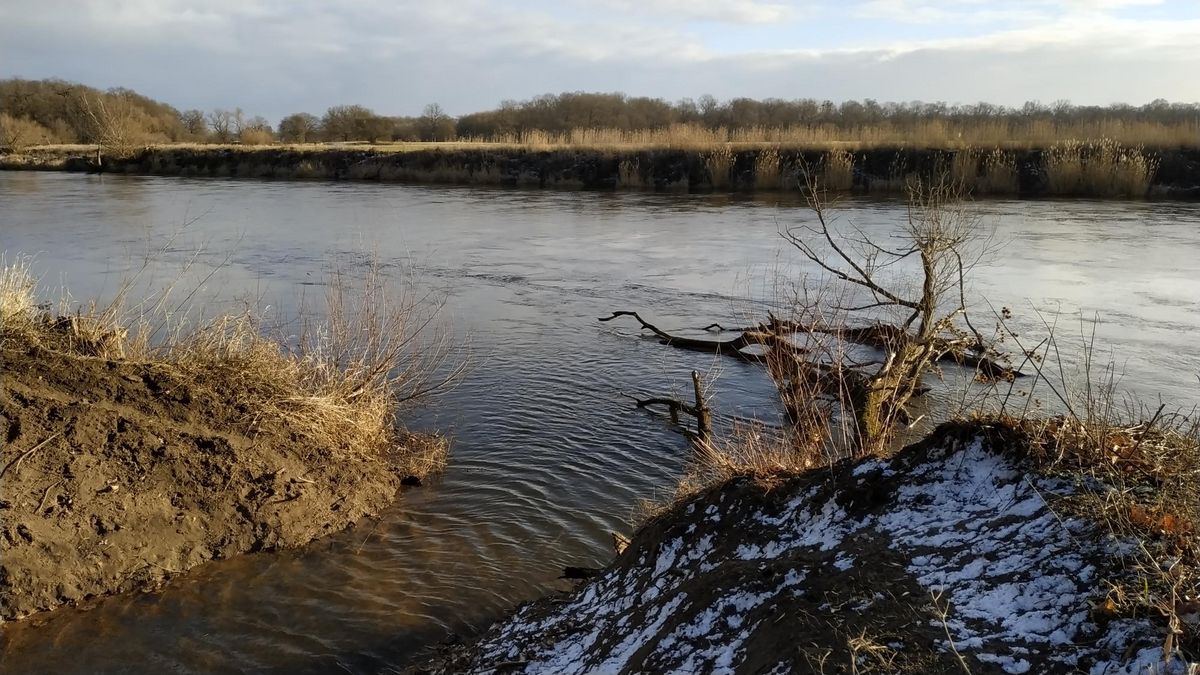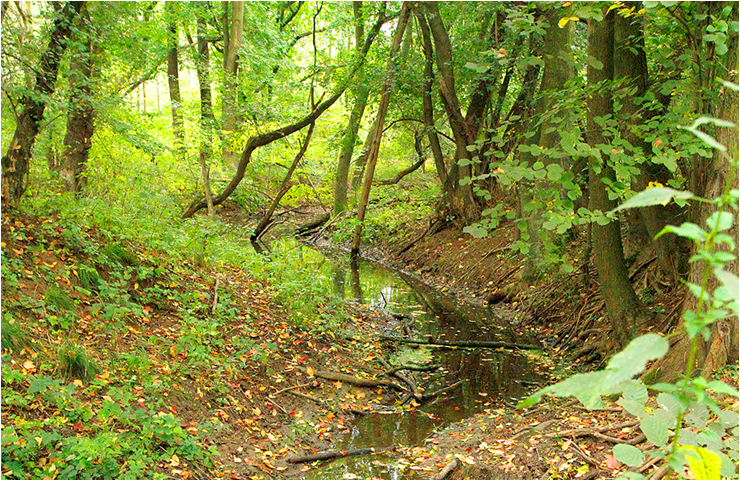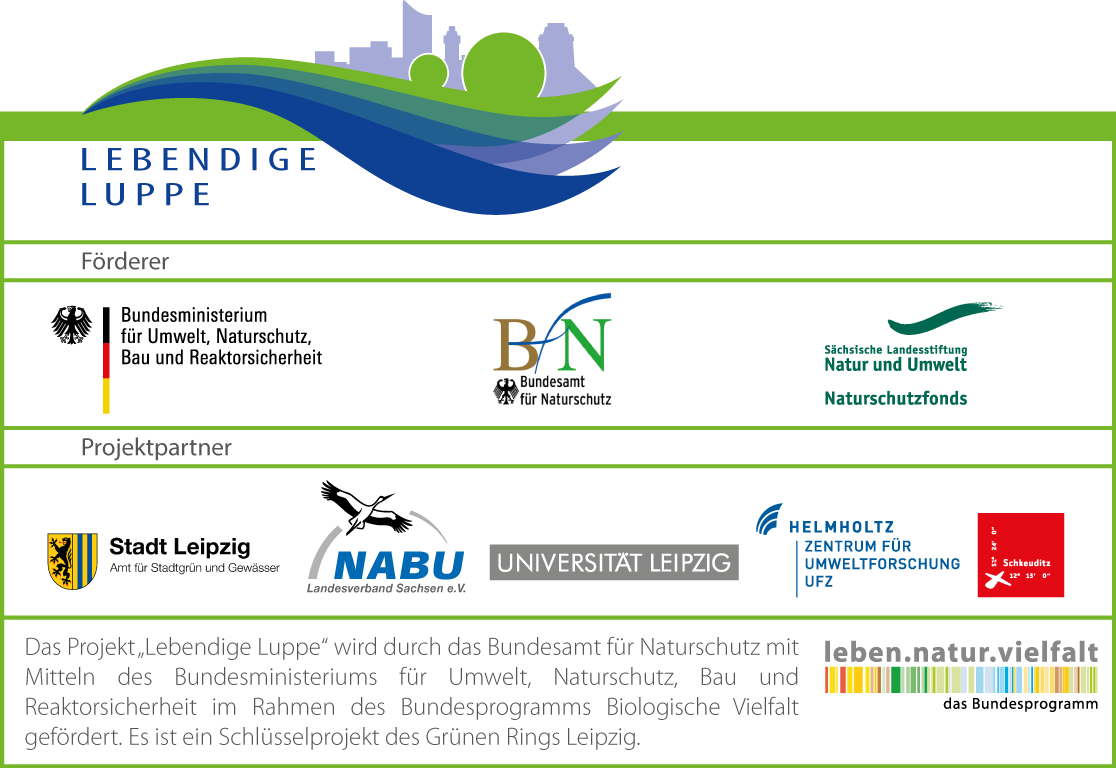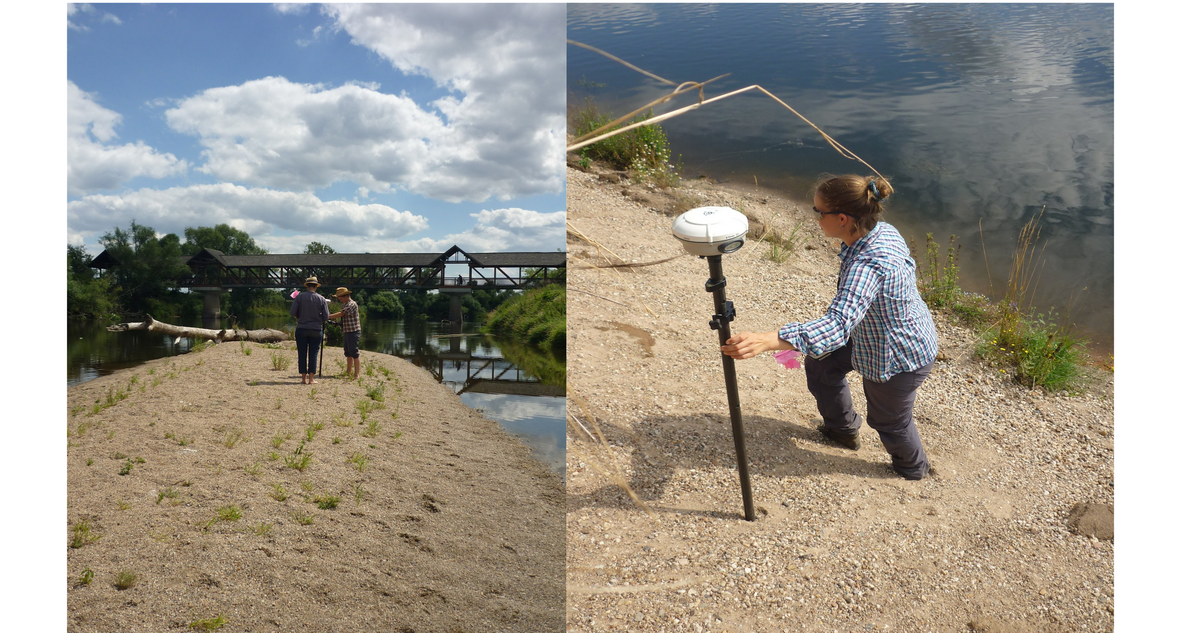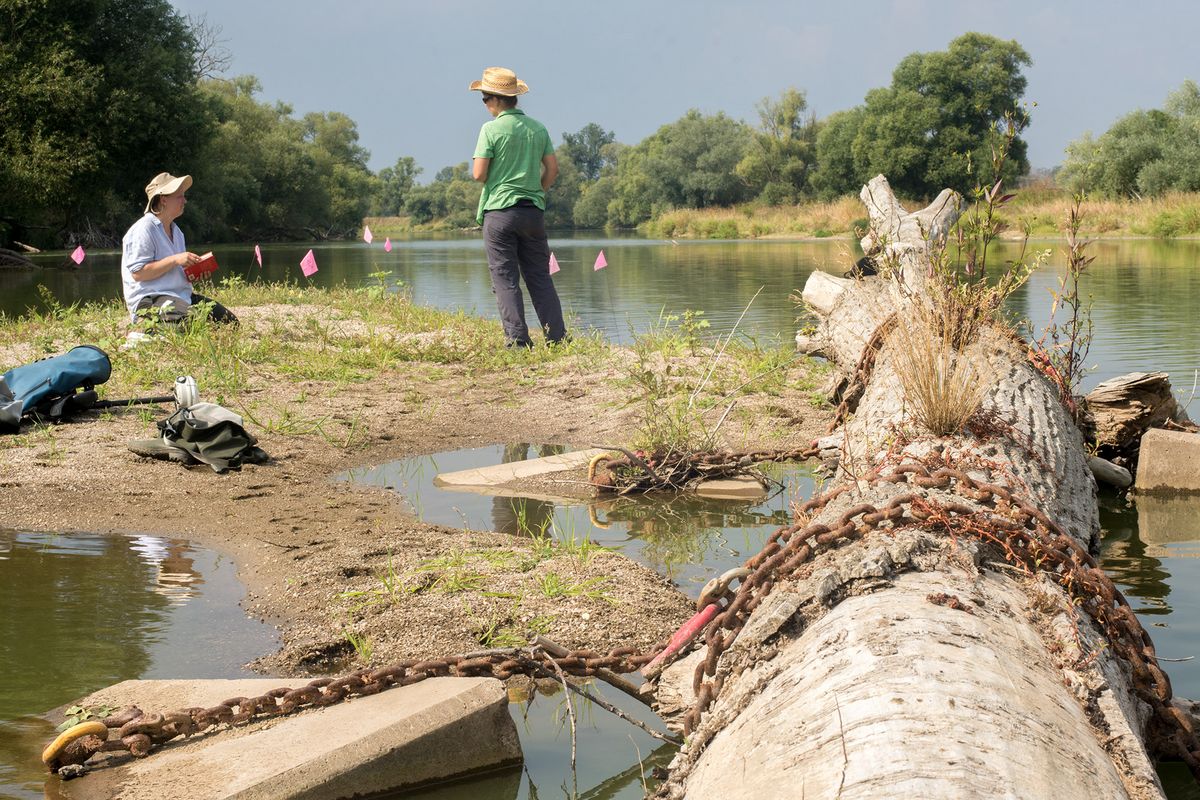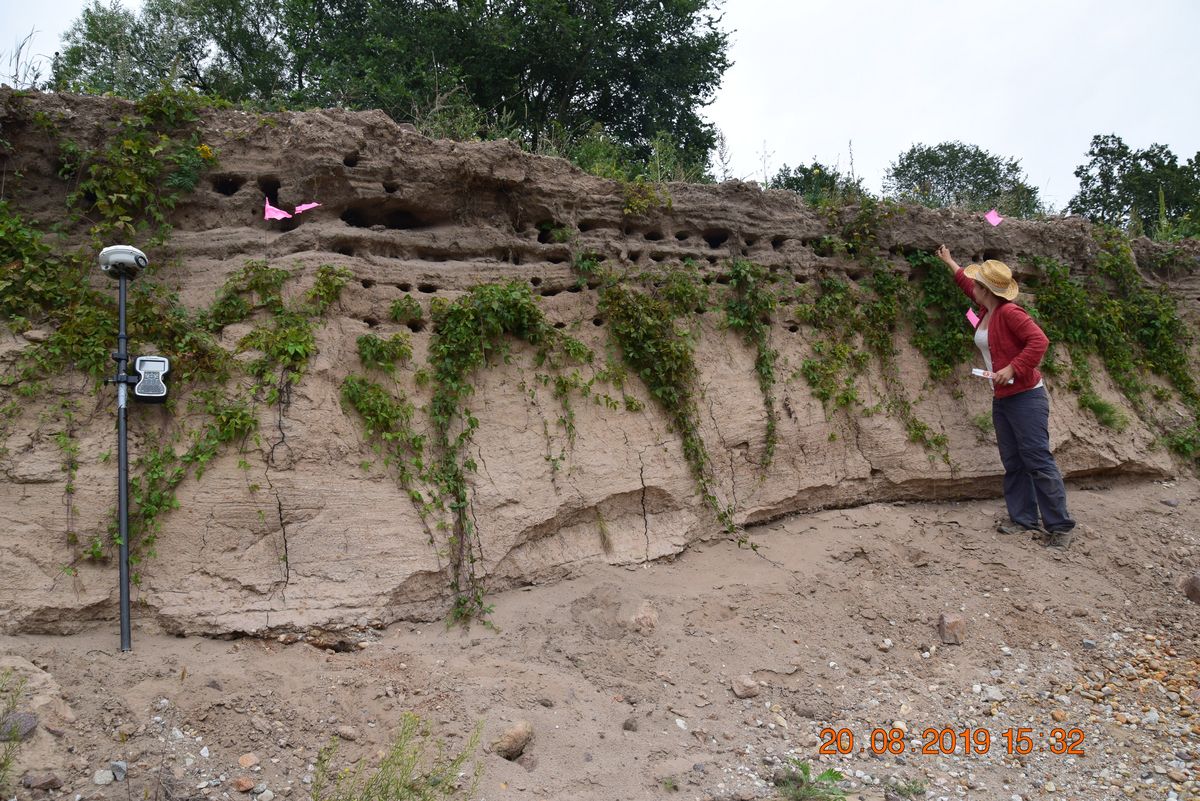Currently, two projects are running in the Leipzig floodplain system, one with a focus on hardwood floodplain forest ("Lebendige Luppe"), the other with a focus on floodplain meadows and open land ("Real-Labor"). In addition, we have just completed a long-term project for the revitalization of floodplains (Wilde Mulde).
Conservation and river restoration ("Wilde Mulde") research aims to improve our understanding of natural ecosystems, and how anthropogenically disturbed systems can be guided back to a close-to-nature state. We are specialized on floodplain restoration, attending revitalization aiming to improve the connectivity between the river and its floodplains. By analyzing ecosystem functions of floodplains in the context of a changing world, we are able to develop broader concepts for conservation and restoration. We focus on river floodplains including the habitats of forest, riparian zone and floodplain meadows.
Currently, we are running projects located in the direct surrounding of Leipzig in the floodplain forest and along the Mulde River (tributary of the Elbe) close to Dessau-Roßlau.
This project is performed by Dr. Stefanie Henkel & Prof. Christian Wirth (formerly by Dr. Carolin Seele-Dilbat)
Floodplains are biodiversity hotspots and provide numerous ecosystem services (habitat provision, regulating functions: flood mitigation, retention of sediments and nutrients, carbon sink). Their ecological functioning and integrity strongly depend on natural fluvial disturbances.
However, floodplain systems were dramatically altered due to heavy anthropogenic impacts, including both hydrological (flow and flood control, disrupted continuity) and morphological modifications (channelization, embankments) as well as intensified land use. This resulted in a decoupling of rivers and their floodplains from periodic flooding and a diminished dynamic of groundwater. Today, floodplains are among the most threatened ecosystems worldwide.
Consequently, for a long-term conservation of floodplain habitats, biodiversity and functioning, revitalization measures are urgently required.
Such a revitalization of the floodplain system of the Weiße Elster and Luppe near the city of Leipzig, Germany, is planned within the project “Lebendige Luppe”.
The floodplain system was faced to anthropogenic regulations since the 20th century. Nevertheless, a relatively high proportion of the former floodplain forest remained in a near-natural state, ranging among the most important floodplain forests in Central-Europe with a high potential and priority for conservation.
The planning and structural implementation of the revitalization measures is done by local authorities of the city of Leipzig.
For more details on the planned measures please visit the homepage:
The scientific monitoring and accompanying research are done in cooperation of University of Leipzig, AG Wirth/Weigelt and Helmholtz Centre for Environmental Research, Department of Nature Conservation.
To be able to predict, measure and evaluate improvements of the ecological state resulting from revitalization measures, a long-term monitoring was set up including 60 permanent plots (0.25ha each). These plots were inventoried for woody and herbaceous vegetation and different environmental variables including light, soil, groundwater and surface water (starting in 2013 and continuously ongoing)
Further, we are monitoring the tree diseases (ash dieback by Chalara fraxinea to Fraxinus excelsior and sooty bark disease by Cryptostoma corticale to Acer pseudoplatanus) and analyze the effects of the recent extreme drought years 2018/19 to the floodplain forest. The project considering the drought events had the contribution of the PhD Student Florian Schnabel.
Recent publications:
Wirth et al. (2021). Naturschutz und Klimawandel im Leipziger Auwald
UFZ Diskussions-Papier mit 10 Thesen und einer Vision zur Revitalisierung der Leipziger Aue.
Scholz et al. (2018) Project introduction and Background
This project is performed by Lena Kretz (Prof. Christian Wirth)
The upcoming project aims to investigate changes in meadows in the Leipzig floodplain system caused by drought and climate change.
A stratified plot grid will be established to depict the important habitat types, the land use gradient, and the hydrological gradient. The plot grid will be established in close cooperation with the new Remote Sensing Centre for Earth System Research at the University of Leipzig, to target remote sensing needs at the same time.
The upscaling with airborne methods enable us to investigate the large scale developments and to make long-term predictions.
This project is performed by Lena Kretz (supervised by Prof. Christian Wirth, Dr. Carolin Seele-Dilbat). This project is completed.
In their natural expression, rivers and floodplains are biodiversity hotspots. Due to their high spatial and temporal heterogeneity, they provide a habitat mosaic with a variety of environmental conditions and ecosystem services. They fulfil important ecosystem functions such as habitat provisioning, flood mitigation, and sediment and nutrient retention.
The joint project Wilde Mulde, promoted by the BMUB and the BMBF, want to revitalize the Lower Mulde along the river section between Retzau and the confluence with the Elbe downstream the city of Dessau-Roßlau. The structural implementation is done by the WWF. The scientific concomitant research is done in cooperation with five other research institutes (UFZ Department of Conservation Biology, UFZ Department River Ecology, TU Braunschweig Leichtweiß-Institute, HTW Dresden, and the University of Hannover.
More details on the restoration implementations can be found on the project homepage.
In the frame of the project, a series of studies was conducted to investigate the effects of structural characteristics of the Vegetation on sediment and nutrient retention. Within a first flume experiment, we found that leaf pubescence and leaf area are important parameter driving sedimentation on leaf surfaces. Check it out here.
With further experiments, we investigated the impact of the patch structure and species diversity on the sedimentation on and underneath the vegetation. We found that height, density and structural diversity increase sediment retention at the patch scale (check it out here), while we did not found clear evidence that species richness influence sediment retention (check it out here). In a forth study, we investigated the impact of the vegetation structure on the sediment and nutrient retention during a flood event along the Mulde River. From the results, we want to emphasize the importance of lower areas within the floodplain for nutrient retention (check it out here).
